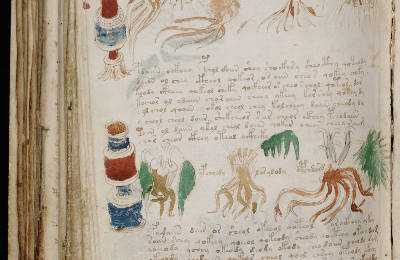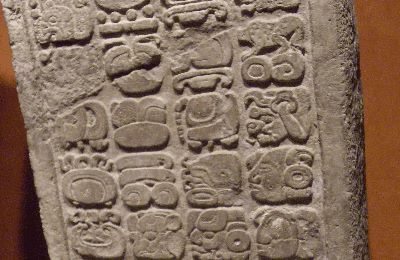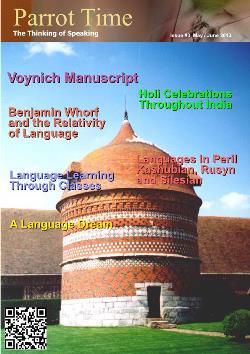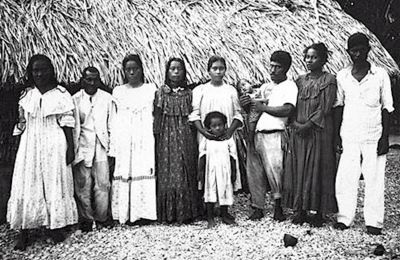Benjamin Whorf
Relativity of Language

|
Whorf took a very unconventional approach to studying linguistics, both in the manner in which he started and the views he took. His work extended into several fields and he pursued everything with a fierce passion for intellectual answers to the world. His Life 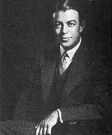 Benjamin Whorf Benjamin Lee Whorf was born on April 24, 1897, in Winthrop, Massachusetts, the eldest of three sons of Harry and Sarah Lee Whorf. He graduated from Winthrop High School in 1914 and then received a B.S. in Chemical Engineering from the Massachusetts Institute of Technology in 1918. After college, Whorf joined the Hartford Fire Insurance Company as a trainee in fire prevention engineering. He settled in Hartford and in 1920, he married Celia Inez Peckham. Together, they had three children: Raymond, Robert and Celia. Whorf got his interest in linguists in a rather unique way. Whorf was religious and while his family was Methodist, it is not quite known what his personal beliefs were. He seems to have been interested in Theosophy, a nonsectarian organization which is based on Buddhist and Hindu teachings, promoting the view of the world as an interconnected whole. During the time, the conflict between science and religion was a major issue and Whorf thought that language might hold a key to resolving it. He became fascinated by the seemingly powerful significance of the letters of the Hebrew alphabet. Around 1924, he started analyzing Biblical texts in an effort to find hidden meanings. He started a semantic and grammatical analysis of Biblical Hebrew. He began to search in other languages such as Mayan for special meanings in the glyphs and letters, and from there became interested in Native American languages and learned about the effort to reconstruct the languages of the ancient Mayan and Aztec people. Whorf began to study Biblical linguistics at the Watkinson Library, now the Hartford Public Library, which had an extensive collection of materials regarding Native American linguistics and folklore. In 1925, he started studying the Nahuatl language and in 1928 he began studying the collections of Mayan hieroglyphic texts. His interests and skills grew rapidly and, in 1928, he first presented a paper at the International Congress of Americanists which was his translation of a Nahuatl document on display at the Peabody Museum of Harvard. From there, he began to study the comparative linguistics of the newly designated Uto-Aztecan language family, as described by linguist Edward Sapir. Mesoamericanists (one who studies the cultures and artifacts of Mesoamerica) Alfred Tozzer, the Maya archaeologist at Harvard University, and Herbert J. Spinden, of the Brooklyn Museum, were impressed by Whorf's work and encouraged him to apply for a grant with the Social Science Research Council (SSRC) to fund his research. Whorf was planning to use the money to travel to Mexico to obtain Aztec manuscripts for the Watkinson library, but Tozzer suggested instead that he spend his time in Mexico documenting modern Nahuatl dialects. And so, in his application for the grant, Whorf proposed to establish the oligosynthetic nature of the Nahuatl language. An oligosynthetic language is one that uses very few morphemes, perhaps as a few as only a few hundred. These would combine synthetically to form statements. Whorf also presented a paper titled Stem series in Maya at the Linguistic Society of America conference which professed that in the Mayan languages, syllables carry symbolic content. Whorf was awarded the grant by the SSRC and, in 1930, he traveled to Mexico City. Once there, Professor Robert H Barlow connected him with several speakers of Nahuatl. This trip produced a posthumously published outline of Milpa Alta Nahuatl and an article on a series of Aztec pictograms. By the time Whorf returned from Mexico in 1930, he had become a well known figure in Middle American linguistics. He still worked as an inspector for the Hartford Fire Insurance Company and would do so for his entire life, for it provided him with a steady income. However, he found himself still drawn into the linguistics world and, in 1931 he enrolled in a program of graduate studies at Yale. He did so for his own interest, not as a means of obtaining a degree. One of his courses was American Indian Linguistics, taught by Edward Sapir, and he was soon part of the the circle of Sapir's students that included many prominent linguists of the time, such as Mary Haas, Charles F. Voegelin, Morris Swadesh, Harry Hoijer and G. L. Trager. Trager and Whorf became close friends and, at the urging of Sapir, published several articles together on the historical and descriptive linguistics of Uto-Aztecan, continuing Whorf's work on that subject.  Edward Sapir Sapir was also a huge influence on Whorf's view of languages. While Whorf already had come to embrace the view that much of the world was interconnected, it was his time with Sapir that really guided that thought in languages. Sapir had also worked with Native American Indian languages, which he combined with his concepts of phonology and grammar. From those, Sapir formulated that culture should be viewed as part of individually learned patterns, both conscious and unconscious, and not as external elements. If culture comes from learned rules of the society instead of as fixed structure, and language plays a key role in thought and communications, then culture and language are distinctly tied together. The way a person expresses themselves shapes their culture, even if they don't realize this is happening. Furthermore, because of a language's central place in a culture, it works as a "guide to 'social reality"' and largely shapes an individual's and a culture's perception of the world. Since language can be subjected to a systematic analysis, it can also be an essential tool for understanding a culture, even its most elusive aspects. These ideas of Sapir worked very well with Whorf's own studies of languages and alphabets. Whorf already understood the way a person's perception of the world was altered by the language they used. An anecdote of such understanding was related to Whorf's own time working as an inspector. In this, Whorf described a work area that stored full gasoline drums in one room and the empty drums in another room. Workers would be very careful around the full drums, but not around the empty ones, even smoking in the same room as the empty drums. This, Whorf explained, was because of the label "empty" which led incorrectly to the idea that the drums were inert and thus not dangerous. However, the "empty" drums were probably more dangerous because of the flammable vapors they still held. Because of the usage of the inaccurate word and the belief behind it, the workers chose the wrong way of dealing with the reality.  Chaco Culture National Historical Park showing remains of Indian dwellings Sapir urged Whorf to study the Hopi language as part of this language studies. Whorf took lessons from Ernest Naquayouma, who was a speaker of Hopi from Toreva village and currently living in Manhattan, New York. He also traveled to the Hopi reservation in New Mexico and learned the language so well that he compiled a Hopi-English dictionary. He wrote several dozen articles in the 1930s, many of which published as the book Language, Thought, and Reality (1956) after his death. In his writings, he used examples from a number of Native American Languages, but the most used for the basis of his ideas was Hopi. The reason for the main focus on Hopi is that, according to Whorf, the Hopi Indians did not think in terms of past, present, and future, which is the natural way of English and many other languages. They divided the world into what comprised of the physical universe, which he called the manifested, and the more abstract concepts of the future, desires, power, intelligence, thought, and life force, which he referred to as manifesting. This philosophy was bound up in the language itself, with verbs exhibiting concepts that would normally be represented by nouns in English. Whorf was appointed "Honorary Research Fellow in Anthropology" at Yale in 1936. He was also invited by Franz Boas, who was a mentor of Sapir, to serve on the committee of the Society of American Linguistics. Whorf was awarded the Sterling Fellowship by Yale in 1937 and he became the lecturer there on Anthropology from 1937 to 1938. He replaced Sapir, who had fallen ill. During the time, the conflict between science and religion was a major issue and Whorf thought that language might hold a key to resolving it. Whorf himself became ill with cancer in 1938. He was also deeply affected by Sapir's death in 1939, and he wrote The Relation of Habitual Thought And Behavior to Language in 1939, in memory of him. This has become accredited as his most definitive work on the subject. He continued publishing his ideas on linguistics in major scholarly journals and more popular journals, like the M.I.T.'s Technology Review. Three essays in that publication [Science and Linguistics (1940), Linguistics as an Exact Science (1940), and Languages and Logic (1941)] helped make his ideas more widely known. He continued writing many essays and papers on a variety of topics, which appeared regularly in the journal Main Current in Modern Thought. The topics included his research on the Hopi and Boasian anthropology. His work in linguistics was a way to create an understanding of how language worked. However, he died at the age of 44 in 1941 at his home in Wethersfield, Connecticut, before many of his theories could be proven. They have, however, provided many future linguists with help in their own studies. |
|
Sapir-Whorf Hypothesis After Whorf's death, his close friend Trager was appointed as the curator for his unpublished manuscripts. While Whorf had worked on many theories and areas of linguistics, his name is most commonly attached to the Sapir-Whorf Hypothesis. Whorf had published his own observations on how linguistic differences have consequences in human cognition and behavior, separate from Sapir. Harry Hoijer actually created the term "Sapir–Whorf hypothesis", even though Sapir and Whorf never put forth any such hypothesis or even worked together to formulate the ideas apart from the teacher-student relationship. Whorf referred to this concept himself as linguistic relativity. Trager and Hoijer published many of the works and worked hard to popularize Whorf's ideas about linguistic relativity. These ideas focused extensively on the way a person views and interprets the world based upon their language structure and therefore, also shaped the world according to their language. From his Science and Linguistics (1940): "We dissect nature along lines laid down by our native language. The categories and types that we isolate from the world of phenomena we do not find there because they stare every observer in the face; on the contrary, the world is presented in a kaleidoscope flux of impressions which has to be organized by our minds—and this means largely by the linguistic systems of our minds. We cut nature up, organize it into concepts, and ascribe significances as we do, largely because we are parties to an agreement to organize it in this way—an agreement that holds throughout our speech community and is codified in the patterns of our language. The agreement is of course, an implicit and unstated one, but its terms are absolutely obligatory; we cannot talk at all except by subscribing to the organization and classification of data that the agreement decrees. We are thus introduced to a new principle of relativity, which holds that all observers are not led by the same physical evidence to the same picture of the universe, unless their linguistic backgrounds are similar, or can in some way be calibrated." Hopi Whorf's work with the Hopi language was an example of linguistic relatively. It also became the most discussed and criticized example. While Whorf claimed that the Hopi language used a different method of viewing time, linguist Ekkehart Malotki tried to prove this incorrect by giving numerous examples how the Hopi language refers to time. He stated that while the the Hopi language system of tenses was composed of a future and non-future, manifesting and manifested in Whorf's terminology, the only significant difference between the Hopi system the three-tense system of European languages was that Hopi combined the past and present into a single category. Many viewed this analysis as proof that Whorf's ideas and his concept of linguistic relativity were false. However, others defended Whorf, arguing that Whorf wasn't claiming that Hopi lacked words or categories to describe time, but that the Hopi concept of time is altogether different from that of English speakers. Whorf had also described a group of stems which he called tensors which described aspects of temporality, but did so without referring to countable units of time. Allophones  Hopi woman dressing hair of unmarried girl Whorf had also introduced the concept of the allophone, which is a word that describes positional phonetic variants of a single superordinate phoneme. This was also promoted by Trager and Bernard Bloch and subsequently became a standard part of linguistic structuralism. Whorf viewed allophones as another example of linguistic relativity because they describes how acoustically different sounds can be treated as reflections of a single phoneme in a language. Through this, the different sounds might appear similar to native speakers of a language. Whorf described them as "Objectively, acoustically, and physiologically the allophones of [a] phoneme may be extremely unlike, hence the impossibility of determining what is what. You always have to keep the observer in the picture. What linguistic pattern makes like is like, and what it makes unlike is unlike". Uto-Aztecan languages Sapir was the first to conclusively show the Uto-Aztecan as a valid language family and Whorf had worked extensively in the languages of it while in Mexico. Among his published works were Notes on the Tübatulabal language, The Comparative Linguistics of Uto-Aztecan, and a review of Kroeber's survey of Uto-Aztecan linguistics. His grammar sketch of the Milpa Alta dialect of Nahuatl, as was mentioned earlier, was not published until after his death. It was used as a basic description of modern Nahuatl, and is still considered to be technically advanced. Part of his legacy in the In Uto-Aztecan languages is the discovery of the reason that the Nahuatl language has the phoneme [tɫ], which is not found in the other languages of the family. It had puzzled other linguists, even Sapir. Whorf published a paper in the journal of American Anthropologists in 1937 which claimed that the phoneme was a result of some of the Nahuan or Aztecan languages having undergone a sound change from the original /*t/ to [tɫ] in the position before */a/. This became known as "Whorf's law", although a more detailed understanding of way this occurred has since been developed. Mayan 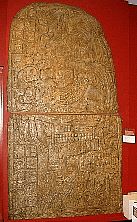 Plaster cast of Seibal, Stela 10, a Mayan artifact from Seibal, Guatemala Remember that Whorf's earliest experience with linguistics was his study of Hebrew and Mayan. Whorf said that Mayan writing was, to an extent, phonetic, but the main authority on the Ancient Mayan culture, J.E.S Thompson rejected this notion, claiming that Mayan writing lacked any kind of phonetic component and thus couldn't be deciphered using linguistic analysis. Whorf argued back that it was the very refusal to approach it that way was what was was holding back the work on deciphering it. While Mayan writing turned out to be logo-syllabic and was deciphered in the 1950s by Yuri Knorozov, it was Whorf's idea of its phonetic nature that helped Knorozov make the breakthrough. While Whorf never sought a degree in linguistics, his studies and publications in several areas of the field have contributed greatly to an understanding of how language worked. He may have died before many of his theories could be published or proven, but they have earned him a position among the most prominent of linguists. | ||
|
PARTIAL LIST OF WORKS
Writings on LinguisticsPublished Writings
| ||
| Benjamin Whorf - Relativity of Language | ||||||||||
| Writer: | Sofia Ozols | |||||||||
| Images: | ||||||||||
| ||||||||||
| Sources: | ||||||||||
| ||||||||||
All images are Copyright - CC BY-SA (Creative Commons Share Alike) by their respective owners, except for Petey, which is Public Domain (PD) or unless otherwise noted.
|
Searching for language resources? Find entertaining and educational books for learning a language at Scriveremo Publishing. Just click the link below to find learning books for more than 30 languages!
| |
comments powered by Disqus




